Results 6,811 to 6,820 of 12091
Thread: Anandtech News
-
03-23-17, 08:11 AM #6811
Anandtech: CORSAIR ONE Gaming PC Released
First announced in February, the new Corsair ONE pre-built gaming PC is now shipping. The Corsair ONE is the first ready-to-run system from the manufacturer that has mostly been known for their PC components and peripherals. Selling and supporting entire systems is a new venture for Corsair, but the design and capabilities of the Corsair ONE are a good fit for the company's product lineup.
The Corsair ONE uses a custom case form factor that is a shallow-depth mini tower, but all of the major components inside use standard PC form factors: mini-ITX motherboard, SFX power supply, 2.5" SSDs and supporting graphics cards up to 11" long with two or three slot cooling solutions. Naturally, many of those components are either existing Corsair parts or special editions made for the Corsair ONE. The total volume of the case is around 12L and the exterior is mostly black aluminum.
The system's cooling is provided by a single ML140 exhaust fan at the top and intake is through the side panels. The right side intake is occupied by the radiator for the CPU's closed-loop water cooler. The left side intake vent opens directly onto the air-cooled graphics card in the base model, while the top Corsair ONE includes a second water cooler for the GPU. Neither radiator has any fans of their own, as the exhaust fan at the top of the case provides most of the air flow. The power supply uses semi-passive cooling with its own fan, and the system as a whole emits around 20dB at idle.
Gallery: CORSAIR ONE





In order to allow the graphics card to be positioned behind the motherboard and facing its own air intake, the Corsair ONE chassis provides the necessary cables to route the PCIe lanes to the graphics card, and pass-through video connections to ports on the back and one HDMI port on the front that is intended for VR displays. The power supply is mounted in the top of the right side of the case and also makes use of a short pass-through cable to the plug on the back of the machine. Because both side panels are used as air intakes, the Corsair ONE can only operate in vertical orientation cannot be operated with either side directly against any obstructing surface.
The top vent and fan are removable without tools, but the two side panels with the radiators must be unscrewed at the top and are hinged at the bottom. While Corsair cases are usually quite easy to work in, further disassembly of the Corsair ONE gets tricky as usability has been sacrificed to save space.
The base model Corsair ONE comes standard with an Intel Core i7 7700 processor in a Z270 motherboard with 16GB of DDR4-2400 RAM. The base graphics card is an air-cooled NVIDIA GeForce GTX 1070. The Corsair ONE PRO model upgrades to a Core i7 7700K processor and a MSI GEFORCE GTX 1080 AERO 8G OC with Corsair's custom water cooler. Storage is either a combination of a SATA SSD and a 2.5" hard drive or a single larger SATA SSD.Corsair ONE PC Specifications Model Corsair ONE Corsair ONE PRO Corsair ONE PRO (web store only) CPU i7 7700 i7 7700K GPU air-cooled GeForce GTX 1070 water-cooled GeForce GTX 1080 DRAM 16GB DDR4 2400 Motherboard mini-ITX, Z270 chipset Storage 240GB SSD + 1TB HDD 480GB SSD + 2TB HDD 960GB SSD PSU custom edition of Corsair SF600: SFX, 80+ Gold with semi-passive cooling Warranty 2 years MSRP $1799 $2299 $2399
Stylistically, the Corsair ONE is less ostentatious than many gamer-oriented products. The front face of the case includes aqua blue accent lighting that can be controlled or entirely disabled through Corsair Link software, but it's single-color rather than full RGB lighting. Even with the lighting off the Corsair ONE doesn't easily blend in with typical office or living room furnishings, but the relatively small size and all-black color scheme make it fairly unobtrusive.
The software pre-installed on the Corsair ONE is minimal: Windows 10 Home with all the necessary drivers, Corsair's CUE customization tool, and installers for popular game digital distribution platforms including Steam, Origin, Uplay and GoG Galaxy.
Corsair will be selling the Corsair ONE PC through major electronics retailers as well as directly through their online store. Support will be be handled in-house by Corsair's expanded support department that now includes specialists for the Corsair ONE. The system comes with a two-year warranty and aftermarket upgrades performed by the consumer will void that warranty, but Corsair will also be partnering with retailers to provide in-warranty aftermarket upgrades.
More...
-
03-23-17, 09:14 AM #6812
Anandtech: The Riotoro Onyx Power Supply Review: 650W & 750W Tested
In this review we are having a look at Riotoro’s first attempt to enter the PSU market - the Onyx 650W and Onyx 750W PSUs. The Onyx are subtle, semi-modular PSUs with an 80Plus Bronze efficiency certification, developed to deliver good overall performance and reliability at competitive prices.
More...
-
03-24-17, 08:14 AM #6813
Anandtech: Dell’s 32-inch 8K UP3218K Display Now For Sale: Check Your Wallet
Back at CES in January, Dell announced the next step in personal screen resolution advancements. The recent rise of ‘4K’ (or more accurately, Ultra-HD at 3840x2160) monitors has shown that there is a demand for high resolution interfaces beyond a smartphone. Back when UHD monitors in a 16:9 format launched en masse, prices were high ($3500-5000+) and stocks were limited – I remember back in 2013 testing the Sharp 32-inch 4K display at a vendor in Taiwan several years ago in one of the first pieces to test 4K/UHD gaming. The fact that this was the only UHD monitor that GIGABYTE had in their HQ was a testament to how new the technology was. Now, 24-inch UHD displays can be had for as little as $350. We may see history repeat itself with 8K monitors from today.
As always, the first Dell monitors off the production line are designed to be high-end professional monitors. The UP3218K goes in at higher than average specifications, such as 1300:1 contrast ratio, 400 nits brightness, but also offers 100% AdobeRGB, 100% RGB and 98% DCI-P3. The UP3218K is part of Dell’s UltraSharp range, which means we should expect the monitor to be color calibrated out of the box to within a given dE value, typically dE < 3.
Naturally a question pops up as to how to hook an 8K display up, especially will all the bells and whistles. The display uses two DP1.4 inputs to provide enough bandwidth, which means that we’re typically dealing with the internal controller stitching together two 3840x4320 displays, similar to how the early 4K monitors did (but with a few more years experience on how to do it). It is possible that Dell supports a single DP1.4 cable, which would most likely use Display Stream Compression 1.2 to offer a visually lossless image as a single panel, however one may suspect that given the target market for this panel, a truly lossless image is probably preferred, even when dealing with two input streams. Having two input streams also means support of 98% DCI-P3.Specifications
Dell UltraSharp UP3218KPanel 31.5" IPS Resolution 7680 × 4320 Brightness 400 cd/m² Contrast Ratio 1300:1 Refresh Rate 60 Hz Viewing Angles 178°/178° horizontal/vertical Color Saturation 100% Adobe RGB
100% sRGB
98% DCI-P3
100% Rec 709Display Colors 1.07 billion Inputs 2 × DisplayPort 1.4 Connectivity USB 3.0 Hub:
3x USB 3.0-A Downstream
1x USB 3.0-A Downstream (power)
USB 3.0-B Upstream
Audio Line-OutRated Power Consumption 87 W
Overall an 8K monitor offers 33.2 megapixels of coverage, which in a 32-inch (31.5-inch) form factor gives 280 pixels per inch. 33.2 megapixels is four times that of UHD, which is 8.3 megapixels. Users wanting to play some AAA titles at 8K on this beast are going to run into walls with memory bandwidth very quickly, however eSports titles should run OK. Using some undocumented tricks, a pair of tests in our new set of gaming benchmarks for CPU reviews can render at 8K or even 16K without needing a monitor, so you might see some numbers in due course showing where we stand with GPU power on this technology. It’s worth noting that Raja Koduri, SVP of AMD’s Radeon Technology Group, has stated that VR needs 16K per-eye at 144 Hz to emulate the human experience, so we're still a way off in the display technology reaching consumer price points at least.
From 2013 to 2016, the prices of UHD monitors fell from $3500-$5000 to $350-$500. Extrapolating this, users wanting an 8K panel on their desk in a more comfortable price bracket might have to wait until 2020 or so to get one. By then, 16K might exist, back at the $5000 price point. Maybe.
Dell’s UP3218K is now available to purchase on Dell’s website for $4999. Currently taking pre-orders, the estimated shipping date is set as April 17th for US50. Linus from LinusTechTips should be happy, as they just invested in a pair of 8K video cameras. Time to submit my own acquisition request…
More...
-
03-25-17, 08:10 AM #6814
Anandtech: Quick Look: Comparing Vulkan & DX12 API Overhead on 3DMark
Earlier this week the crew over at Futuremark released a major update to their API Overhead testing tool, which is built into the larger 3DMark testing suite. The API Overhead tool, first rolled out in 2015, is a relatively straightforward test that throws increasingly large number of draw calls at a system to see how many calls a system can sustain. The primary purpose of the tool is to show off the vast improvement in draw call performance afforded by modern, low-level APIs that can efficiently spread their work over multiple threads, as opposed to classic APIs like DirectX 11 which are essentially single-threaded and have a high degree of overhead within that sole thread.
The latest iteration of the API Overhead test, now up to version 1.5, has added support for Vulkan, making it one of the first feature-level benchmarks to add support for the API. Khronos’s take on a low-level API – and a decedent of sorts of Mantle – Vulkan has been available now for just a bit over a year. However outside of a very successful outing with Doom, in the PC ream it has been flying somewhat under the radar, as few other games have (meaningfully) implemented support for the API thus far. By the end of 2017 we should be seeing some wider support for the API, but for the moment it’s still in the process of finding its footing among PC developers.
In any case, like OpenGL versus Direct3D 9/10/11 before it, there’s a lot of curiosity (and arguments) over which API is better. Now that Futuremark is supporting the API for their Overhead test, let’s take a quick look at how the two APIs compare here, and whether one API offers lower overhead than the other.
As a reminder for the API Overhead test, this is not a cross-system test or even a cross-GPU test. The purpose of the test is solely to measure overhead within a single setup. In practice it’s something of a combined GPU and driver test, as depending on where the bottleneck lies, the limiting factor can be CPU overhead from the driver or just outright hitting the limits of the GPU’s command processor.CPU: Intel Core i7-4960X @ 4.2GHz Motherboard: ASRock Fatal1ty X79 Professional Power Supply: Corsair AX1200i Hard Disk: Samsung SSD 840 EVO (750GB) Memory: G.Skill RipjawZ DDR3-1866 4 x 8GB (9-10-9-26) Case: NZXT Phantom 630 Windowed Edition Monitor: Asus PQ321 Video Cards: NVIDIA GeForce GTX 1080 Ti Founders Edition
NVIDIA GeForce GTX 1060 Founders Edition
AMD Radeon RX 480 8GBVideo Drivers: NVIDIA Release 378.92
AMD Radeon Software Crimson 17.3.3OS: Windows 10 Pro
The purpose of the test is to compare API performance on a single system. It should not be used to compare component performance across different systems. Specifically, this test should not be used to compare graphics cards, since the benefit of reducing API overhead is greatest in situations where the CPU is the limiting factor.With that out of the way, let’s start somewhere in the middle of the pack with the GeForce GTX 1060 6GB.
Going into this I was not expecting Vulkan and DX12 overhead to be meaningfully different, so having run the GTX 1060 6GB first, it definitely caught me by surprise that Vulkan’s overhead was so much lower. The net result is that using the Vulkan API, the GTX 1060 can sustain 26.4M draw calls per second, 32% more than DirectX 12. And to be sure, this is consistent across multiple runs.
However before jumping to conclusions, let’s take a look at a couple of other cards.
AMD’s fastest GCN4 card and card most comparable to the GTX 1060 is the Radeon RX 480 8GB. Running the API Overhead test on this card produces something notably different from the GTX 1060. Rather than finding Vulkan well in the lead, we get not quite the inverse: DX12 is holding a small lead at 26M draw calls versus 24.9M draw calls.
The two obvious differences here are the GPU and driver – in other words, the two things that matter the most – and is why cross-GPU results are not directly comparable. However it does go to show that whatever is causing Vulkan to perform better on the GTX 1060 is not a consistent factor. Switching things up can easily put Vulkan performance on the back foot.
Finally, to give the test as much GPU power as possible, I’ve also gone ahead and run it on NVIDIA’s recently released GTX 1080 Ti. This gives us a datapoint where GPU bottlenecking has been reduced as much as possible, and also gives us another datapoint with NVIDIA’s driver set.
The results still put Vulkan in the lead, but not by anywhere near what we saw on the GTX 1060. 32.4M calls versus 31.3M calls is a much narrower 4% difference between the APIs. What this does hint at is that on NVIDIA cards, the Vulkan API path has an edge in overhead, but even within just the NVIDIA ecosystem it’s not a massive difference. As with the AMD RX 480, for the GTX 1080 Ti this is essentially a draw between the two APIs. Which to be fair, is what we’d expect to find.
Overall the latest 3DMark API Overhead benchmark proved both reassuring, and more interesting than I was expecting to find. At a high level, neither Vulkan nor DirectX 12 hold a consistent lead with regards to API overhead, which indicates that both AMD and NVIDIA have done a good job optimizing their drivers and runtimes for this API. And more to the point, no matter the API used, it’s still vastly more efficient than DirectX 11, to the point where the draw call throughput is significantly greater than anything a developer could hope to use in the real world.
However the GTX 1060 results present an interesting anomaly, with the Vulkan API path showcasing noticeably lower overhead. I do have to stress that this is absolutely academic – these low-level feature tests are designed to test one small aspect of a GPU/system, and game performance won’t be anything like this – but it is an unexpected find that hints that Vulkan and DX12 may not be so neck-and-neck at all times on NVIDIA cards. The question we’re left to ponder is whether this is product of NVIDIA’s drivers, or if there’s something at the API level that just maps a bit better to NVIDIA’s command processor…
More...
-
03-27-17, 11:54 AM #6815
Anandtech: Intel Launches Optane Memory M.2 Cache SSDs For Consumer Market
Last week, Intel officially launched their first Optane product, the SSD DC P4800X enterprise drive. This week, 3D XPoint memory comes to the client and consumer market in the form of the Intel Optane Memory product, a low-capacity M.2 NVMe SSD intended for use as a cache drive for systems using a mechanical hard drive for primary storage.
The Intel Optane Memory SSD uses one or two single-die packages of 3D XPoint non-volatile memory to provide capacities of 16GB or 32GB. The controller gets away with a much smaller package than most SSDs (especially PCIe SSD) since it only supports two PCIe 3.0 lanes and does not have an external DRAM interface. Because only two PCIe lanes are used by the drive, it is keyed to support M.2 type B and M slots. This keying is usually used for M.2 SATA SSDs while M.2 PCIe SSDs typically use only the M key position to support four PCIe lanes. The Optane Memory SSD will not function in a M.2 slot that provides only SATA connectivity. Contrary to some early leaks, the Optane Memory SSD uses the M.2 2280 card size instead of one of the shorter lengths. This makes for one of the least-crowded M.2 PCBs on the market even with all of the components on the top side.
The very low capacity of the Optane Memory drives limits their usability as traditional SSDs. Intel intends for the drive to be used with the caching capabilities of their Rapid Storage Technology drivers. Intel first introduced SSD caching with their Smart Response Technology in 2011. The basics of Optane Memory caching are mostly the same, but under the hood Intel has tweaked the caching algorithms to better suit 3D XPoint memory's performance and flexibility advantages over flash memory. Optane Memory caching is currently only supported on Windows 10 64-bit and only for the boot volume. Booting from a cached volume requires that the chipset's storage controller be in RAID mode rather than AHCI mode so that the cache drive will not be accessible as a standard NVMe drive and is instead remapped to only be accessible to Intel's drivers through the storage controller. This NVMe remapping feature was first added to the Skylake-generation 100-series chipsets, but boot firmware support will only be found on Kaby Lake-generation 200-series motherboards and Intel's drivers are expected to only permit Optane Memory caching with Kaby Lake processors.
Intel has published some specifications for the Optane Memory drive's performance on its own. The performance specifications are the same for both capacities, suggesting that the controller has only a single channel interface to the 3D XPoint memory. The read performance is extremely good given the limitation of only one or two memory devices for the controller to work with, but the write throughput is quite limited. Read and write latency are very good thanks to the inherent performance advantage of 3D XPoint memory over flash. Endurance is rated at just 100GB of writes per day, for both 16GB and 32GB models. While this does correspond to 3-6 DWPD and is far higher than consumer-grade flash based SSDs, 3D XPoint memory was supposed to have vastly higher write endurance than flash and neither of the Optane products announced so far is specified for game-changing endurance. Power consumption is rated at 3.5W during active use, so heat shouldn't be a problem, but the idle power of 0.9-1.2W is a bit high for laptop use, especially given that there will also be a hard drive drawing power.Intel Optane Memory Specifications Capacity 16 GB 32 GB Form Factor M.2 2280 single-sided Interface PCIe 3.0 x2 NVMe Controller Intel unnamed Memory 128Gb 20nm Intel 3D XPoint Typical Read Latency 6 µs Typical Write Latency 16 µs Random Read (4 KB, QD4) 300k Random Write (4 KB, QD4) 70k Sequential Read (QD4) 1200 MB/s Sequential Write (QD4) 280 MB/s Endurance 100 GB/day Power Consumption 3.5 W (active), 0.9-1.2 W (idle) MSRP $44 $77 Release Date April 24
Intel's vision is for Optane Memory-equipped systems to offer a compelling performance advantage over hard drive-only systems for a price well below an all-flash configuration of equal capacity. The 16GB Optane Memory drive will retail for $44 while the 32GB version will be $77. As flash memory has declined in price over the years, it has gotten much easier to purchase SSDs that are large enough for ordinary use: 256GB-class SSDs start at around the same price as the 32GB Optane Memory drive, and 512GB-class drives are about the same as the combination of a 2TB hard drive and the 32GB Optane Memory. The Optane Memory products are squeezing into a relatively small niche for limited budgets that require a lot of storage and want the benefit of solid state performance without paying the full price of a boot SSD. Intel notes that Optane Memory caching can be used in front of hybrid drives and SATA SSDs, but the performance benefit will be smaller and these configurations are not expected to be common or cost effective.
The Optane Memory SSDs are now available for pre-order and are scheduled to ship on April 24. Pre-built systems equipped with Optane Memory should be available around the same time. Enthusiasts with large budgets will want to wait until later this year for Optane SSDs with sufficient capacity to use as primary storage. True DIMM-based 3D XPoint memory products are on the roadmap for next year.
More...
-
03-28-17, 07:43 AM #6816
Anandtech: Netgear Expands Orbi Wi-Fi System Family with AC2200 Kits
Netgear introduced their first product in the Wi-Fi system / mesh category, the Orbi, in August 2016. Its dedicated wireless backhaul (4x4 802.11ac / 1733 Mbps) and 2x2 radios with MU-MIMO support for the clients (on both the router and the satellite) made it one of the best performing Wi-Fi system kits in the market. Since the introduction of the Orbi RBK50 (AC3000), various vendors in the Wi-Fi market have come with their own variants. The increasing competition has turned out to be good for consumers, resulting in kits getting introduced at very competitive price points.
Many mesh systems come in packs of three, but, Orbi stood out with its claim of being able to blanket a 4000 sq. ft house with just a router and a satellite. Despite the high price (mainly due to additional hardware, compared to a regular router), mesh / Wi-Fi systems have been enjoying very good market reception. In order to tackle the increased competition (often coming in at a lower price point compared to the Netgear Orbi RBK50 kit), Netgear is introducing two additional members in the Orbi family - the RBK30 and RBK40. Like the RBK50, the main unit and the satellite in the RBK40 are similar in appearance and available interfaces. However, the physical dimensions of the RBK40's components are smaller than that of the RBK50. The RBK40 and the RBK30 share the same router, but, the satellite in the latter is of the wall-plug variety and has no wired ports. The other differences between the three are summarized in the table below.
Netgear is able to reach these lower price points due to the following changes compared to the RBK50:Netgear Orbi Kits (Q1 2017) Aspect RBK50 RBK40 RBK30 Class AC3000 AC2200 Backhaul 4x4 802.11 ac (1733Mbps) 2x2 802.11ac (866 Mbps) Clients 2x2 802.11bgn/ac (400Mbps + 866 Mbps) Wired Configuation (Router) 1xWAN + 4xLAN GbE Ports Wired Configuration (Satellite) 5x GbE Ports None Launch Date Aug. 2016 Mar. 2017 Launch MSRP $400 $350 $300
- Replacement of the 4x4 backhaul radio with a 2x2 one (AC3000-class to AC2200-class) in both the RBK30 and RBK40
- Updates to the power amplifiers to meet the lowered range requirements in the RBK30 and RBK40
- Removal of the 4-port wired switch in the RBK30's satellite
During the press briefing, Netgear emphasized that they support both PC-based and mobile app-based setup for the Orbi. Particular stress was also made on the ability of the Orbi kits to operate effectively without any reliance on the cloud (unlike products such as the Google OnHub that have encountered various issues due to over-reliance on the cloud for day-to-day operation).
Netgear is also making the satellites available for purchase separately. The price points for these extenders range from $150 for the wall-plug variety to $250 for the one with the 4x4 backhaul link.
The new Orbi products also use the same Qualcomm Atheros IPQ4019 network processor SoC, along with the Wi-Fi SON features. While retaining the same feature set, the RBK30 and RBK40 expand the target market for Wi-Fi systems. The lower price points will also help Netgear in tackling the increasing competition.
More...
-
03-28-17, 08:35 AM #6817
Anandtech: NVIDIA Adds GeForce GTX 1060 To “Prepare for Battle” Bundle
In a brief announcement this morning, NVIDIA is expanding their "Prepare for Battle" bundle to include the GeForce GTX 1060.
NVIDIA's latest bundle launched nearly two months ago, at the end of January. At the time it launched, the bundle offered anyone who purchased a GeForce GTX 1080, GTX 1070, or a PC or laptop equipped with these cards the option to download either Ubisoft’s For Honor or Tom Clancy’s Ghost Recon Wildlands for free. NVIDIA then expanded the bundle to cover the GTX 1080 Ti upon its launch earlier this month.
Now that a good number of miles have been run on this offer, NVIDIA has included the GeForce GTX 1060 in on the action as well. This means that short of the entry-level GTX 1050 series, everything above in NVIDIA's GeForce lineup includes a game bundle. It's a notable distinction, in part because the GTX 1060 is the fastest card in a competitive market for NVIDIA - that is, where AMD offers a card with comparable performance. Consequently, NVIDIA's bundle has taken on something of a new meaning, as it's no longer about just throwing in a value add item to higher margin cards, but now about influencing mainstream video card buyers.
Looking at the updated lineup, one thing worth noting here is that while GTX 1080 and GTX 1070 systems were included in the bundle, there is no word on if GTX 1060-equipped desktops or laptops are part of this offer as well.NVIDIA Current Game Bundles Video Card Bundle GeForce GTX 1080/1070 Prepare for Battle GeForce GTX 1060 Prepare for Battle GeForce GTX 1050Ti/1050 None GeForce GTX 1080/1070 Desktops Prepare for Battle GeForce GTX 1080/1070 Notebooks Prepare for Battle
We haven’t yet received news to how long this offer will run, though we will update here when we catch news of the end date. Meanwhile it is worth remembering to verify the participation of any vendors purchased from as NVIDIA likely will not give codes for purchases made from sellers that are not participating. NVIDIA also makes clear that it is up to the buyer to confirm their vendor of choice is participating in this bundle as NVIDIA cannot provide download codes and coupons for purchases made at non-participating retailers and e-tailers.
More...
-
03-28-17, 08:35 AM #6818
Anandtech: Razer Updates The Razer Blade Pro With THX Certification
Late last year, Razer acquired the majority of THX, and while it may have seemed like something outside their normal realm, today Razer is announcing an updated Razer Blade Pro, with THX Certification. For those unfamiliar, THX has been certifying audio and video equipment for decades, with an initial focus on the cinema, and then branching out in to consumer electronics. With their new parent company, it makes a lot of sense to branch into computer certification.
First, let’s go over what’s new on the Razer Blade Pro. Just this month, Brandon finished his review on the Razer Blade Pro which launched late last year. The updated model launching today has some decent upgrades over the original model. First off, the CPU has been upgraded to Kaby Lake, but rather than doing a straight swap from the Core i7-6700HQ to the Core i7-7700HQ, Razer has gone with the Core i7-7820HK processor, which is 2.9-3.9 GHz, but it is also an unlocked processor, and Razer is supporting CPU overclocking in the Synapse software. One of the issues Brandon pointed out in the review was that Razer was billing the Razer Blade Pro as the ultimate laptop, but they went with the same quad-core processor as far less expensive laptops, so this is a great change. There’s only one quad-core mobile part over this, and it’s not unlocked, and being unlocked is going to improve the appeal to this market. In addition, Razer has bumped the RAM frequency to DDR4 2667 MHz, up from 2133 MHz DDR4 previously. It’s a small change, but a welcome one.
The other specifications have not changed. It still features a NVIDIA GTX 1080 8 GB graphics card, driving a 17.3-inch UHD 3840x2160 IGZO G-SYNC display, with 100% Adobe RGB color gamut, and 512 GB to 2 TB SSD support in RAID 0 with two SSDs. We’ve said this before, but honestly one good SSD would be better for most users, but it seems like the gaming market is migrating towards RAID 0 again. The form factor, light weight for a laptop of this performance, and other items remain.
The big new feature is THX Certification, and the Razer Blade Pro is the first laptop to be qualified for THX Mobile Certification. I spoke with Razer and THX about what this entails, and it appears to be good news for end users. THX tests several models from the pre-production phase onwards, with feedback from the first test looping back into the hardware configuration until the later generation units meet the testing guidelines. What those guidelines are, are unfortunately still a mystery, since THX and Razer have not gotten back to us yet on their targets, but if they do we will let you know. THX did say that they test panel performance on brightness and contrast, and are including a color profile to give a white point of D65, Rec. 709 color gamut, and low error levels, although low wasn’t defined at our meeting. The color gamut support here is important, since previous to this, the Razer Blade Pro only displayed in the Adobe RGB color space, which is much wider than sRGB. This leads to blown out colors, unless the app itself is color managed, which is a rare thing in Windows. This new color profile from THX should alleviate one of the biggest issues with the Razer Blade Pro in day to day use.Razer Blade Pro Model 2017 2016 CPU Intel Core i7-7820HK
4C/8T
2.9-3.9 GHz
8MB Cache
45W TDPIntel Core i7-6700HQ
4C/8T
2.6-3.5 GHz
6MB Cache
45W TDPGPU NVIDIA GTX 1080 8GB
2560 CUDA Cores
1556 - 1733 (Boost) MHzMemory 32 GB 2667MHz DDR4 32 GB 2133MHz DDR4 Display 17.3" 3840x2160 60 Hz w/G-SYNC Storage 512GB (2 x 256GB) M.2 PCIe SSD
1TB (2 x 512GB) M.2 PCIe SSD
2TB (2 x 1TB) M.2 PCIe SSDI/O 3 x USB 3.0 Ports
1 x Thunderbolt 3
1 x HDMI 2.0
SD Card Slot
1 x Headset Jack
1 x Killer E2400 Ethernet (10/100/1000Mbps)Dimensions 22.5mm x 424mm x 281mm (HxWxD)
0.88" x 16.7" x 11" (HxWxD)Weight 3.54 kg / 7.8 lbs Battery 99 Wh, 250W AC Adapter Wireless Killer Wireless-AC 1535
2x2:2 with Bluetooth 4.1Price $3999.99 and up $3699.99 512GB
$3999.99 1TB (Model tested)
$4499.99 2TB
The second part of THX Mobile Certification is for audio, and while you may be expecting this to apply to the speakers, it’s actually certification for the headphone jack. This might seem a bit odd, but with the noise level of a thin and powerful system, certifying the headphone jack is arguably the better call, and honestly there’s little chance for small laptop speakers to meet much of a certification anyway. On the headphone jack, THX certification means that there has to be a flat frequency response, even with different impedance loads from different headphones, along with low distortion and high power, and a low noise floor to ensure there is no background hiss. Assuming the Razer Blade Pro didn’t already meet these targets, this should mean an improved experience from the headphone jack, although as with the display certification, we were not provided exact certification standards.
There are certainly going to be people who feel this kind of certification isn’t necessary, but there definitely is some extra confidence when you purchase something as expensive as a Razer Blade Pro, and you are ensured that the display and audio meet a certain threshold of performance. The addition of a Rec. 709 color gamut profile from THX for the Razer Blade Pro is a big win for end users as well, since there was no way before to cap the color gamut for apps with no color management.
With the new overclockable CPU, faster memory, and THX Certification, Razer has also bumped the starting price to $3999.99, and availability will start in April on Razerzone.com.
Source: Razer
More...
-
03-28-17, 11:47 AM #6819
Anandtech: Intel Launches Kaby-Lake based Xeons: The E3-1200 v6 Family
For the several generations previous, it has become customary for the Xeon equivalents of consumer processors to hit the market several months later. We saw the launch of Kaby Lake on the consumer desktop in January, with quad-core parts up to 4.0 GHz coming to retail. The Xeon E3 launch will be in the similar vein to previous years, designed for entry-level workstations, small business servers and storage servers, and Intel’s main comparisons for these Xeons will be to replace similar builds that are more than three years old.
A total of eight processors will be launched today under the E3 v6 name, with some models receiving a corresponding low-power version later down the line. All desktop replaceable CPUs will be using the LGA1151 socket, the same as the previous generation E3 v5 Xeons.
On the integrated graphics models, i.e. those ending in '5', are all running Intel HD P630 graphics and run up to 1150 MHz. This is the ‘professional’ version of the HD630 we see on the consumer parts, using Intel’s latest Gen9 graphics architecture and supporting H.265 encode/decode. Our Kaby Lake review piece goes into more detail.Intel E3-1200 v6 CPUs (Kaby Lake) C/T Base Freq Turbo L3 Cache IGP IGP Freq TDP E3-1280 v6 4/8 3.9 GHz 4.2 GHz 8 MB - - 72 W E3-1275 v6 4/8 3.8 GHz 4.2 GHz 8 MB P630 1150 MHz 73 W E3-1270 v6 4/8 3.8 GHz 4.2 GHz 8 MB - - 72 W E3-1245 v6 4/8 3.7 GHz 4.1 GHz 8 MB P630 1150 MHz 73 W E3-1240 v6 4/8 3.7 GHz 4.1 GHz 8 MB - - 72 W E3-1230 v6 4/8 3.5 GHz 3.9 GHz 8 MB - - 72 W E3-1225 v6 4/4 3.3 GHz 3.7 GHz 8 MB P630 1150 MHz 73 W E3-1220 v6 4/4 3.0 GHz 3.5 GHz 8 MB - - 72 W
The high-end E3 v6 parts will have a maximum base frequency of 3.9 GHz base and a 4.2 GHz turbo. All the parts listed have a full 8MB of L3 cache, and either be 72W for non-IGP models or 73W for IGP parts. As with other previous Xeons, these come with ECC memory support, vPro and other technologies Intel files under the professional level. In Intel’s presentations, Intel SGX (Software Guard Extensions) are included, however TSX (Transactional Extensions) were not listed.
It is worth noting that for LGA1151 based E3 v5 Xeons, Intel adjusted the requirements such that Xeon processors require a server grade chipset on the motherboard. For Skylake E3 v5 parts, this was either a C232 or C236 chipset – we reviewed a few motherboards with these on (ASRock E3V5 Gaming, GIGABYTE Z170X-Extreme ECC). With a BIOS update, these C232/C236 motherboards should support the new v6 processors.Intel E3-1200 v6 and v5 CPUs IGP v6 Model v5 IGP - 3.9/4.2, 72W E3-1280 3.7/4.0, 80W - + 3.8/4.2, 73W E3-1275 3.6/4.0, 80W + - 3.8/4.2, 72W E3-1270 3.6/4.0, 80W - - - E3-1260L 2.9/3.9, 45W - + 3.7/4.1, 73W E3-1245 3.5/3.9, 80W + - 3.7/4.1, 72W E3-1240 3.5/3.9, 80W - - - E3-1240L 2.1/3.2, 25W - - - E3-1235L 2.0/3.0, 25W + - 3.5/3.9, 72W E3-1230 3.4/3.8, 80W - + 3.3/3.7, 73W E3-1225 3.3/3.7, 80W + - 3.0/3.3, 72W E3-1220 3.0/3.5, 80W -
For the E3 v6 line, Intel is not releasing new chipsets, deciding to stick with the C232 and C236 models. This means that users wishing to upgrade their E3 v5 system will have to wait for a BIOS update in order for the new CPUs to work. We have yet to receive word if the standard motherboard manufacturers are launching a new series of motherboards for this generation, however we suspect that several will do so.
With the no new motherboard chipsets being launched, it is, therefore, odd that Intel is announcing Optane Memory support with the E3-1200 v6 Xeons. This essentially means that Optane Memory support is already baked into the chipset, and it is merely a firmware approval of a CPU and chipset combination in order for it to be enabled. Intel states that only select E3-1500M v6 (mobile) and E3-1200 v6 (desktop) configurations will be available for use with Optane, and may only be provided on an OEM basis.
Along with Intel’s announcement, we are seeing systems being launched with E3 v6 processors installed. Intel did not supply a price list with their press materials, however we would expect prices to be equivalent to the last generation.Intel Xeon E-Series Families (February 2017) E3-1200 v5 E3-1500 v5
E3-1500M v6E5-1600 v4
E5-2600 v4
E5-4600 v4E7-4800 v4 E7-8800 v4 Core Family Skylake Skylake Broadwell Broadwell Broadwell Core Count 2 to 4 2 to 4 4 to 22 8 to 16 4 to 24 Integrated Graphics Few, HD 520 Yes, Iris Pro No No No DRAM Channels 2 2 4 4 4 Max DRAM Support (per CPU) 64 GB 64 GB 1536 GB 3072 GB 3072GB DMI/QPI DMI 3.0 DMI 3.0 2600: 1xQPI
4600: 1xQPI3 QPI 3 QPI Multi-Socket Support No No 2600: 1S/2S
4600: 1S/2S1S, 2S or 4S Up to 8S PCIe Lanes 16 16 40 32 32 Cost $213 to
$612$396 to
$1207$294 to
$7007$1223 to
$3003$4061 to
$8898Suited For Entry Workstations QuickSync,
Memory ComputeHigh-End Workstation Many-Core Server World Domination
To call out a big elephant in the room: Intel has more competition in this space than in previous years. Intel gives value to Xeon processors above consumer products, but Ryzen could potentially be an alternative to Intel. Aside from AMD, some of the positioning that Intel puts forward with the E3 could be taken up by Intel’s Atom offerings, Xeon-D, or even musings from ARM partners on new silicon designs. All being said, Intel is still expected to have the peak single thread performance for general purpose compute, and has the larger install base of customers and ready-to-go platforms. Performance per watt will be a key metric to monitor as well.
We have the E3 v5 processors in for testing on our new CPU test suite, and we hope that the E3 v6 units will arrive in due course. Stay tuned for those.
Gallery: E3-1200v6 Press Slide Deck





Related Reading:- Intel Launches 4/8S Broadwell-EX Xeons: E7-4800 v4 and E7-8800 v4 Families
- The Intel Xeon E5 v4 Review: Testing Broadwell-EP With Demanding Server Workloads
- Broadwell E3 v4 Xeons: Cirrascale at SuperComputing 15
More...
-
03-28-17, 02:08 PM #6820
Anandtech: Lenovo Updates ThinkStation P320 with Intel Xeon E3 v6 and NVIDIA Quadro P
Today Lenovo is announcing an upgrade to its entry-level ThinkStation P300-series workstations. The update revolves around two new updates: firstly Intel’s Xeon E3 v6 (or 7th generation Core) processors featuring the Kaby Lake microarchitecture, but also secondly NVIDIA’s Quadro professional graphics cards powered by the Pascal architecture. The new ThinkStation P320 systems inherit form-factors and price-points from the previous-generation ThinkStation P310, but offer higher performance due to newer CPUs and GPUs as well as faster M.2 SSDs. The machines will be available starting from late April.
The Lenovo ThinkStation P320-series tower and SFF workstations are based on Intel’s C236 PCH, which relates back to the new Xeon E3 v6 announced today. Variants of the P320 using Intel’s 7th generation Core i3/i5/i7 processors without ECC memory and other advantages that Xeon CPUs provide will also be available. The workstations support up to 64 GB of DDR4-2400 memory, two M.2 PCIe NVMe SSD (up to 1 TB each) as well as up to 2/4 (SFF/tower) 3.5” storage drives or up to 3/4 (SFF/tower) 2.5” SSDs/HDDs.
When it comes to I/O capabilities, both tower and SFF machines are equipped with a 2×2 802.11ac Wi-Fi + Bluetooth 4.0 module (Intel's AC8265), gigabit ethernet, USB 2.0/3.0 ports, DisplayPort and D-Sub outputs and so on. Just like other ThinkStation computers from Lenovo, the P320 workstations support the company’s Flex Modules (up to four per machine) that can add a Thunderbolt 3/USB 3.1 Type-C connector, a 29-in-1 card reader, a FireWire port, a slim ODD or an eSATA header to the front panel of the PC.
Gallery: Lenovo ThinkStation P320 Family





Traditionally, graphics is what divides Lenovo’s big and small workstations. The tower version of the ThinkStation P320 can support up to two NVIDIA’s Quadro P4000 professional graphics adapters featuring the GP104GL GPU (1792 stream processors, up to 105 W TDP) with 8 GB of GDDR5 memory each. Meanwhile, the SFF flavor of the ThinkStation P320 supports up to two low-profile Quadro P1000 cards based on the GP107GL GPU (640 stream processors, 47 W TDP) with 4 GB of memory. The new Quadro video cards featuring the Pascal architecture represent a significant upgrade for Lenovo’s entry-level workstations as current-gen ThinkStation P310 machines are shipped with Kepler-based Quadro K1200 introduced over two years ago (and based on an architecture from 2014).
The added graphics horsepower enabled Lenovo to position the ThinkStation P320-series workstations not only for entry-level 3D CAD/CAM applications but also for VR workloads for mechanical and design engineers. Meanwhile, if the systems are ordered primarily for 2D and business applications, Lenovo can also equip them with appropriate NVIDIA NVS multi-monitor graphics cards.Lenovo ThinkStation P320: General Specifications SFF Tower CPU Xeon E3-1220 v6 (4C/4T, 3.0/3.5 GHz)
Xeon E3-1225 v6 (4C/4T, 3.3/3.7 GHz)
Xeon E3-1230 v6 (4C/8T, 3.5/3.9 GHz)
Xeon E3-1240 v6 (4C/8T, 3.7/4.1 GHz)
Xeon E3-1245 v6 (4C/8T, 3.7/4.1 GHz)
Xeon E3-1270 v6 (4C/8T, 3.8/4.2 GHz)
Xeon E3-1275 v6 (4C/8T, 3.8/4.2 GHz)
Xeon E3-1280 v6 (4C/8T, 3.9/4.2 GHz)
Intel Core i-series 7000-family CPUs
Intel Skylake-based CPUs, Xeon E3 v5 for Win7Chipset Intel C236
SKL, KBL support,
up to 20 PCIe 3.0 PCIe lanes
x1, x2, x4 bifurcation
RAID, vPro, TXT etc.RAM Up to 64 GB DDR4-2400 with ECC GPU Up to 2 × NVIDIA Quadro P1000 Up to 2 × NVIDIA Quadro P4000 Storage 3.5" SATA: up to 2 × 4 TB
2.5" SATA: up to 3 × 3 TB
M.2 PCIe: up to 2 × 1 TB
Up to three drive form-factor storage devices.3.5" SATA: up to 4 × 4 TB
2.5" SATA: up to 4 × 3 TB
M.2 PCIe: up to 2 × 1 TB
Up to four drive form-factor storage devicesExpansion PCIe x16
PCIe x4 (x16 mechanical)
2 × PCIe x1
Flex Modules (up to four)Networking Gigabit Ethernet
Intel Wireless AC8265
(802.11ac, 2 × 2, 2.4 GHz/5GHz + Bluetooth 4.0)I/O 2 × USB 2.0
7 × USB 3.0
Thunderbolt 3 - optional
USB 3.1 - optional
9-in-1 card reader - optional
29-in-1 card reader - optional
FireWire - optional
slim ODD - optional
eSATA - optionalDimensions 101.6 × 394.5 × 337.8 mm
4.0" × 15.5" × 13.3"175.3 × 426 × 376 mm
6.9" × 16.8" × 14.8"Volume 12 L 25 L Operating System Windows 10 Pro x64,
Windows 7 Pro x64 (Skylake),
Ubuntu and RHEL LinuxVarious Windows 10 Preloads:
CyberLink PowerDVD
CyberLink Create
Lenovo Companion
Lenovo Solution Center
Microsoft Office 2016 (trial)Windows 7 Preloads:
Adobe Acrobat Reader
CyberLink PowerDVD
CyberLink Create
Lenovo Companion
Lenovo Solution Center
Microsoft Office 2016 (trial)
McAfee LiveSafe 30-day trial
ThinkVantage System Update
Rescue and Recovery
Lenovo Solution Centre
Lenovo PowerEngage
Gallery: Lenovo ThinkStation P320 Tower




Since there are still customers who use Microsoft’s Windows 7 operating system and who intend to do so for a while, Lenovo offers Windows 7 x64 on its ThinkStation P320-series workstation by downgrading the Windows 10 Pro x64. Since the official support for Windows 7 does not exist for the new Kaby Lake CPUs, Lenovo allows customers to install appropriate Skylake processors – either the Xeon E3 v5 or the 6th generation Core i3/i5/i7.
Gallery: Lenovo ThinkStation P320 SFF





Lenovo plans to start selling the ThinkStation P320 Tower and the ThinkStation P320 SFF in late April. Pricing of the products is still being finalized, but it should be consistent with the previous generation P300-series workstations, the company told us. At present, the ThinkStation P310 Tower and the ThinkStation P310 SFF start at $719, and we expect the P320 to be similar.
Related Reading:
- Lenovo Unveils ThinkStation P410/P510: Intel Xeon E5 v4 with Up to 8 Cores, NVIDIA Quadro M6000
- Lenovo Upgrades 2-Way ThinkStation Workstations with Intel Xeon E5 v4 CPUs
- HP Z2 Mini G3 Announced: Miniature Professional Workstation with Xeon and Quadro
More...
Thread Information
Users Browsing this Thread
There are currently 21 users browsing this thread. (0 members and 21 guests)




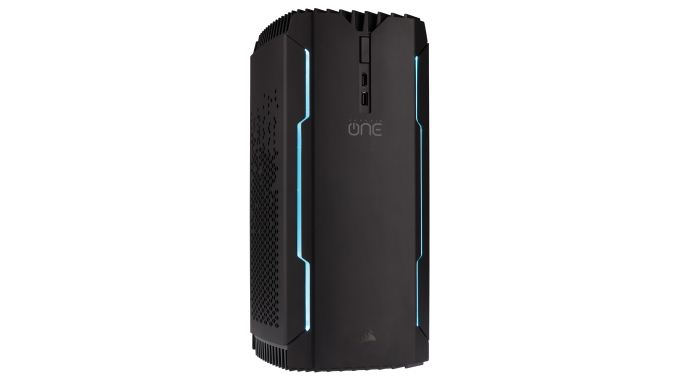

 Quote
Quote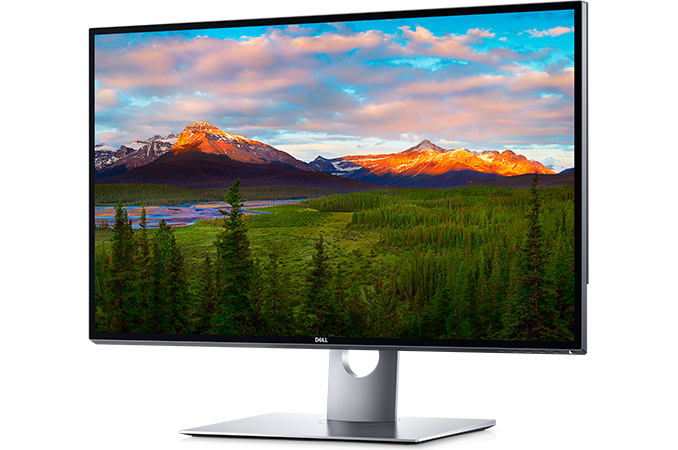


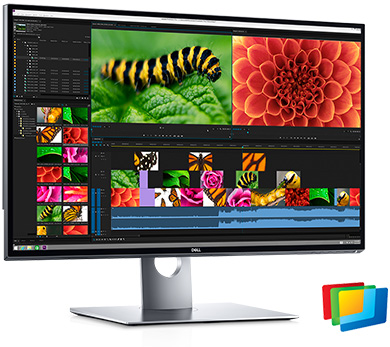
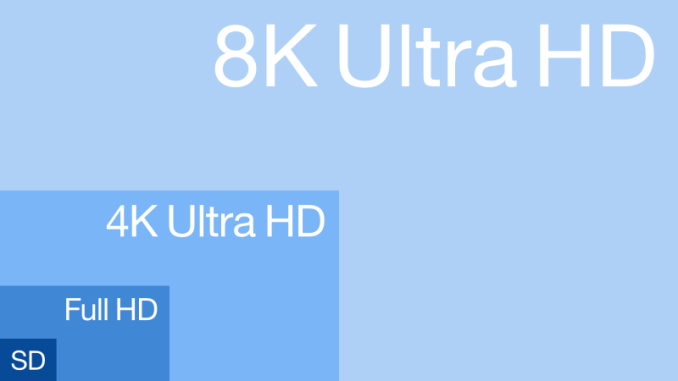

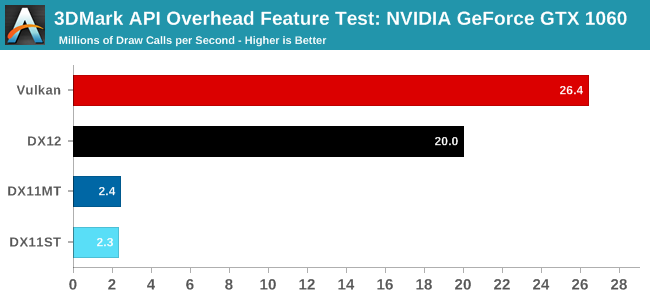
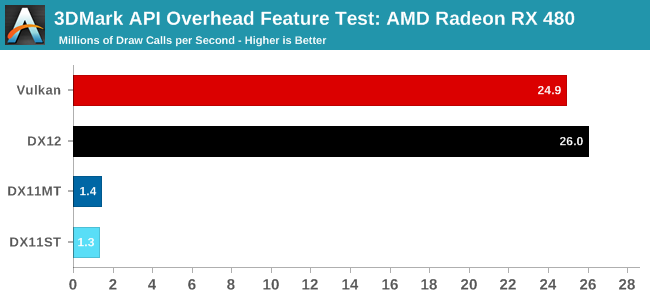
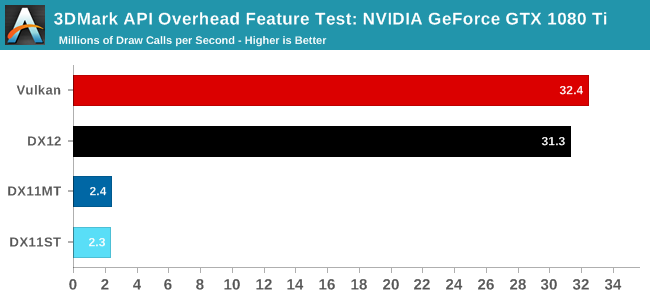

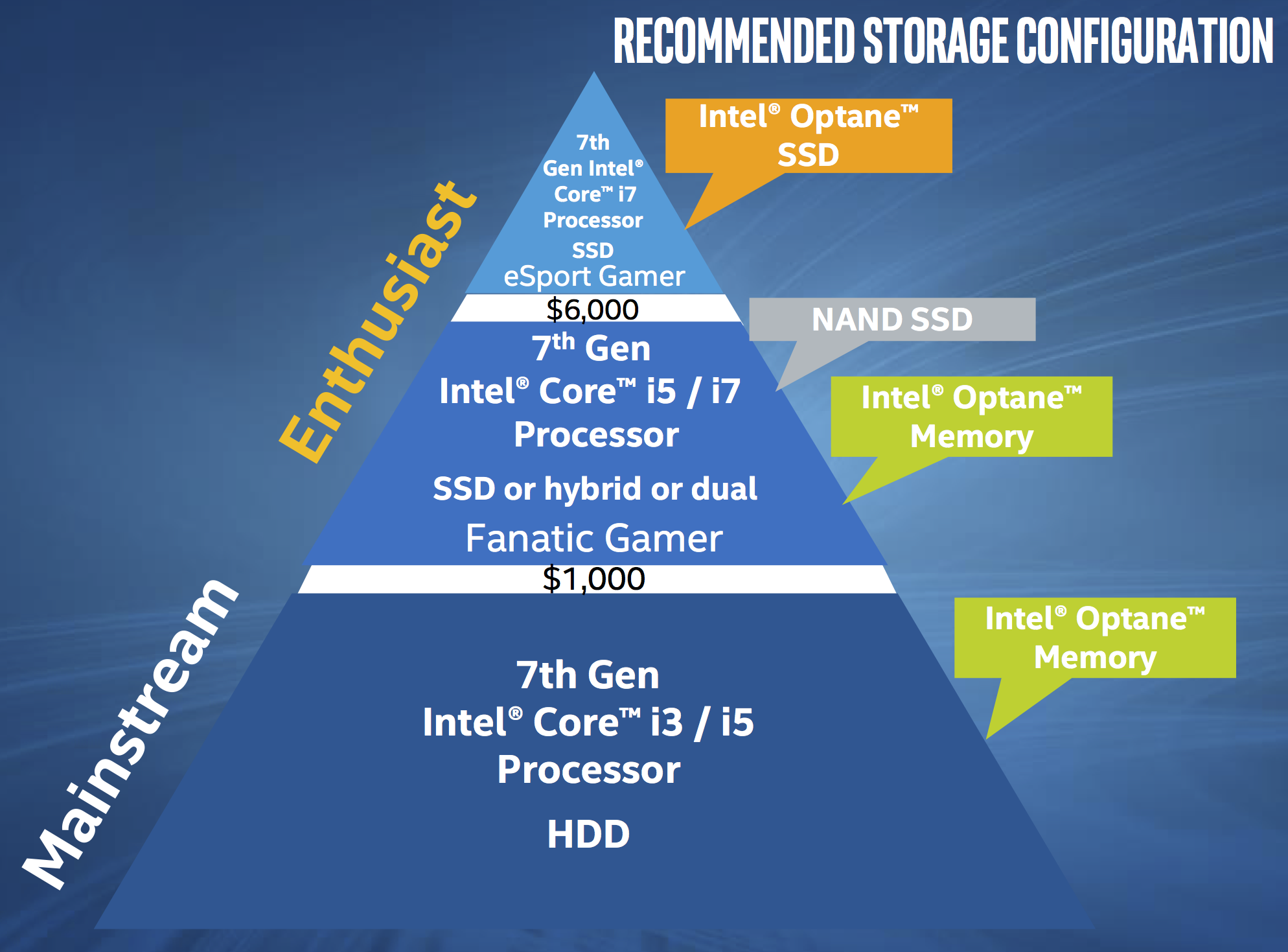


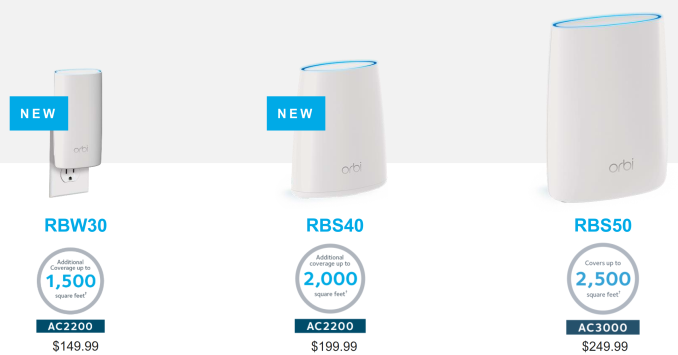



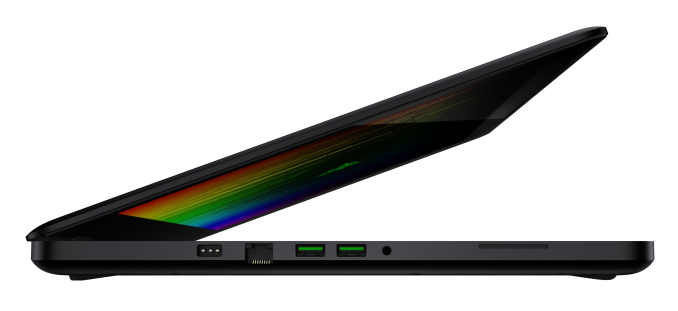
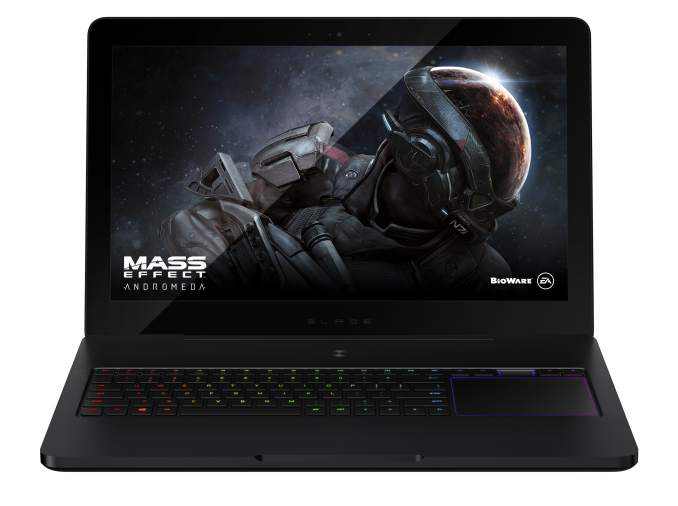
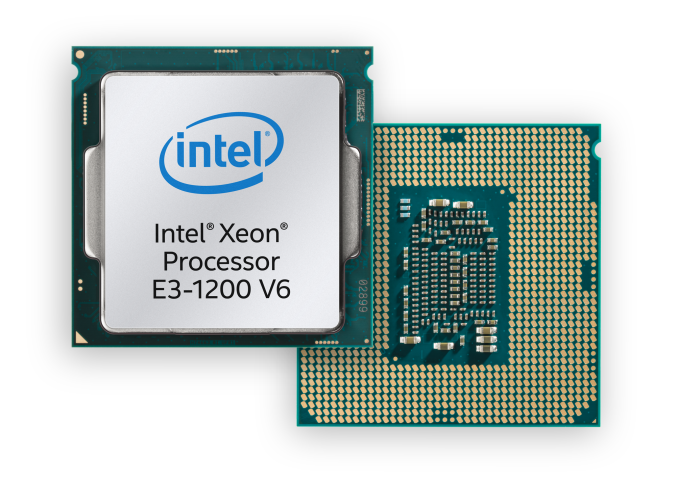
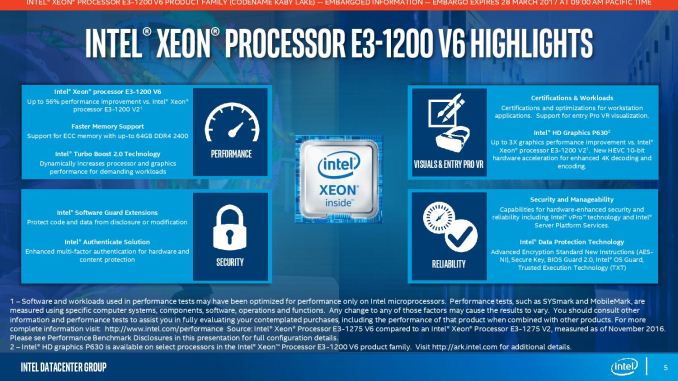

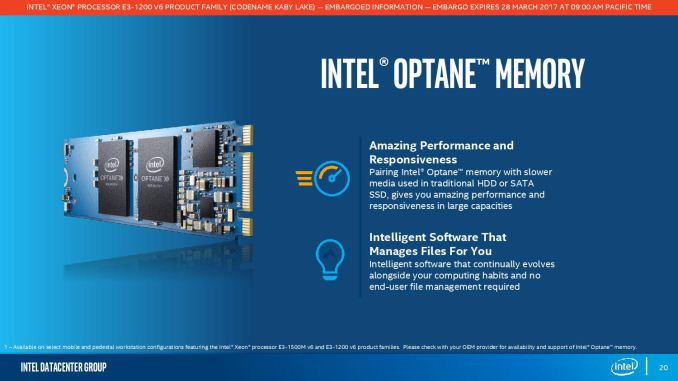

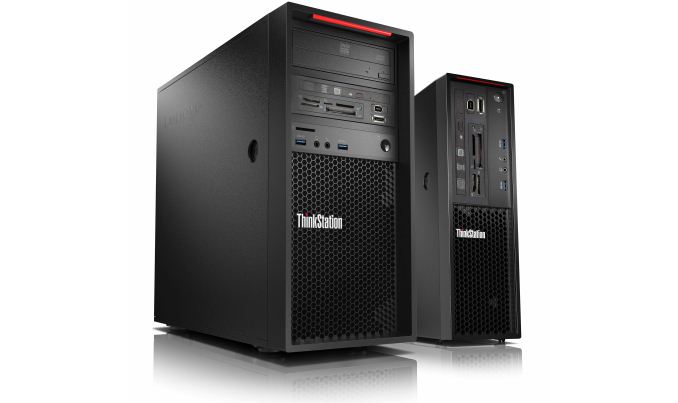
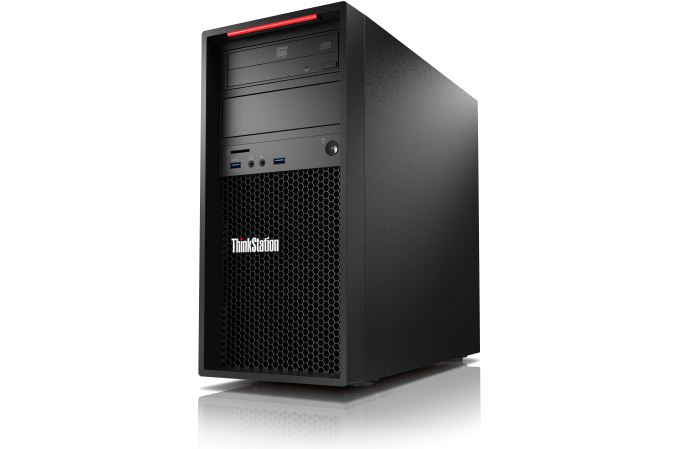
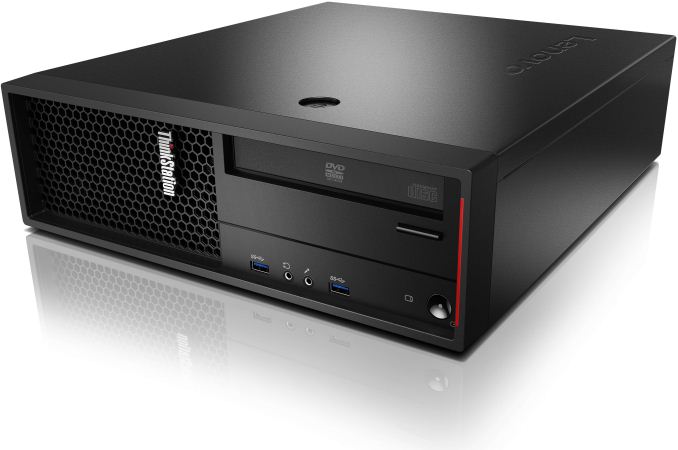
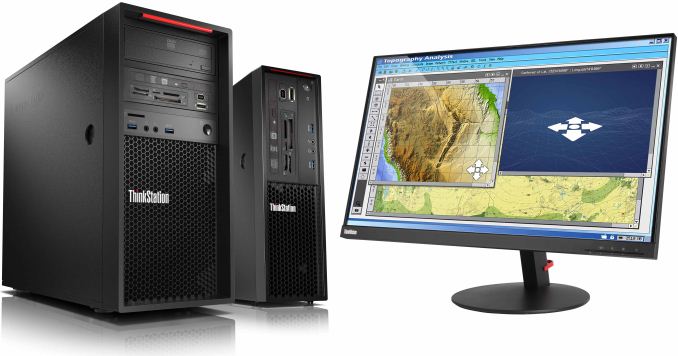
















Bookmarks